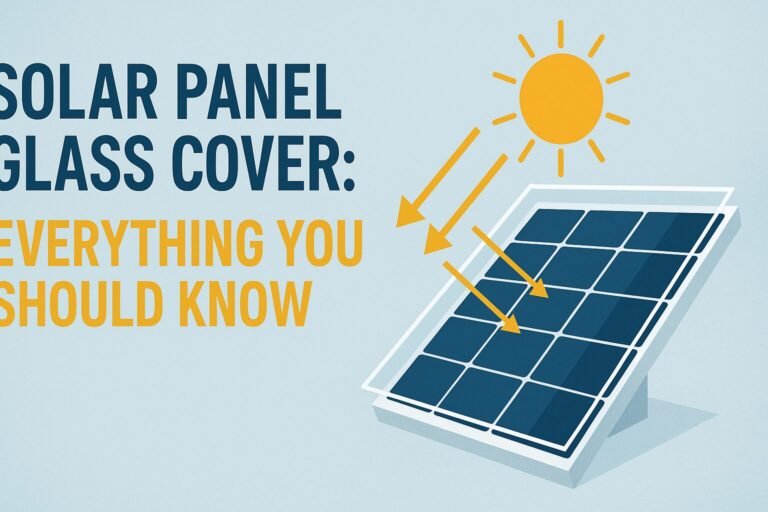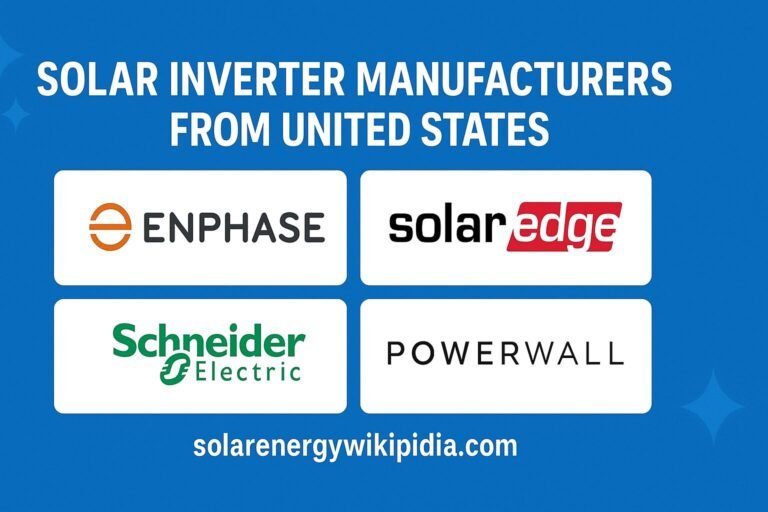
California has long been at the forefront of renewable energy adoption in the United States, with solar energy playing a pivotal role in the state’s clean energy transition. Central to this success has been California’s net energy metering (NEM) program, which allows solar customers to receive credit for excess electricity they generate and feed back to the grid. However, significant changes are on the horizon for 2025 that could substantially alter the economics of going solar for homeowners and businesses throughout the state.
Table of Contents
What Is Net Metering and How Does It Work in California?
Net metering is a billing mechanism that credits solar energy system owners for the electricity they add to the grid. When a solar system generates more electricity than is being used on-site, that excess power flows back to the grid, and the customer receives credit on their utility bill. This effectively allows customers to use the grid as a virtual battery, drawing from it when their solar production is low and contributing to it when production exceeds consumption.
In California, net metering has evolved through several iterations:
- NEM 1.0: The original program offered full retail-rate credits for excess generation, making solar highly attractive financially.
- NEM 2.0: Implemented in 2016, this version added new non-bypassable charges and required time-of-use (TOU) rate plans but largely maintained the core financial benefits.
- NEM 3.0 (Current): Also known as “Net Billing,” this version significantly reduced compensation rates for exported electricity and has been in effect since April 2023.
The program has been instrumental in helping California achieve its impressive solar adoption rates, with over 1.5 million solar installations across the state.
A Look Back: Evolution of Net Metering in California
California’s net metering policy has undergone significant evolution:
NEM 1.0 (Pre-2016): The original program offered one-to-one credits at the full retail rate, making solar an exceptional investment for early adopters. Systems installed under NEM 1.0 were guaranteed these favorable rates for 20 years.
NEM 2.0 (2016-2023): As solar costs decreased and adoption increased, utilities successfully lobbied for modifications. NEM 2.0 maintained most retail-rate compensation but added interconnection fees and mandatory time-of-use rates. This version still provided strong financial incentives for solar adoption.
NEM 3.0 (April 2023-Present): After heated debate and multiple proposed decisions, the California Public Utilities Commission (CPUC) approved dramatic changes that reduced export compensation rates by approximately 75% compared to previous versions. This current policy has already significantly impacted solar economics in the state.
Each transition has been controversial, with utilities arguing that generous net metering policies create a “cost shift” to non-solar customers, while solar advocates counter that distributed generation provides substantial grid benefits that justify fair compensation.
What Are the Proposed Solar Net Metering Changes for 2025?
In early 2024, Governor Gavin Newsom issued Executive Order N-5-24, directing the CPUC to revisit solar policies and propose adjustments that would help restore growth to California’s solar industry, which saw a significant contraction following the implementation of NEM 3.0.
The CPUC’s response to Executive Order N-5-24 outlines several potential modifications that could take effect in 2025:
- Export Compensation Rate Adjustments: Potential increases to the current export rates, which were dramatically reduced under NEM 3.0.
- “Adder” Credits for Solar-Plus-Storage: Additional incentives for systems that include battery storage to promote grid stability and peak-shaving capabilities.
- Low-Income Customer Provisions: Enhanced benefits for low-income households to make solar more accessible across different economic segments.
- Community Solar Expansion: New provisions to allow renters and those without suitable roof space to participate in solar programs.
- Glide Path Approach: A more gradual transition in compensation rates rather than the dramatic drop seen in NEM 3.0.
The proposed changes reflect a recognition that the NEM 3.0 transition may have been too abrupt, causing solar installations to drop by over 80% in some utility territories.

Why the Changes Are Being Proposed
The 2025 policy revisions are being driven by several factors:
Market Correction Concerns: Data from 2023-2024 shows that NEM 3.0 created a more severe contraction in the solar market than anticipated, threatening California’s climate goals and solar industry jobs.
Grid Modernization Needs: As California works toward its 100% clean energy target, there’s recognition that distributed energy resources must play a vital role in grid reliability.
Economic Balance: The changes aim to find a middle ground between utility concerns about cost shifts and the need to maintain healthy incentives for solar adoption.
Climate Targets: California’s ambitious climate legislation requires rapid decarbonization, and solar energy remains a cornerstone strategy.
Utilities have generally maintained that solar customers aren’t paying their fair share for grid maintenance, while solar advocates argue that distributed generation provides substantial value through reduced transmission needs and enhanced grid resilience.
Who Will Be Affected by the 2025 Changes?
The 2025 net metering adjustments will primarily affect:
New Solar Customers: Those who install systems after the new policies take effect will be the most directly impacted by any changes to compensation rates or program structures.
Existing Customers: Current solar owners will likely be protected by grandfathering provisions, though the specific terms may vary. Typically, existing systems retain their current compensation structure for 20 years from installation.
Commercial Solar: Businesses considering solar installations may see different impacts than residential customers, as commercial rate structures and consumption patterns differ significantly.
Solar-Plus-Storage Adopters: Those installing combined solar and battery systems will likely benefit the most from the proposed changes, as policy is increasingly favoring dispatchable resources that can deliver power when the grid needs it most.
It’s worth noting that the proposed changes will likely maintain different treatment for customers of different utilities (PG&E, Southern California Edison, and San Diego Gas & Electric).
Pros and Cons of the 2025 Net Metering Proposal
Potential Benefits
- Revitalized Solar Industry: After the sharp decline following NEM 3.0, improved economics could help restore California’s solar installation rates.
- Enhanced Grid Support: Incentives targeting storage adoption will help address the “duck curve” issue of excess midday generation and evening peaks.
- Climate Goal Alignment: More favorable solar economics would support California’s goal of 90% clean electricity by 2035.
- Job Creation: The solar industry supports over 70,000 jobs in California, which could grow with policy support.
- Energy Resilience: More distributed generation and storage reduces vulnerability to public safety power shutoffs and other grid disruptions.
Potential Drawbacks
- Continued Cost Concerns: Utilities may argue that any increase in export compensation could exacerbate alleged cost shifts to non-solar customers.
- Market Uncertainty: Frequent policy changes create planning challenges for homeowners and businesses considering solar investments.
- Complex Decision-Making: Increasingly nuanced rate structures and incentives make it harder for consumers to evaluate solar economics.
- Potential for Underperformance: If changes are too modest, they may fail to adequately revive the solar market.
How Will the Proposed Changes Affect the Cost-Benefit of Going Solar?
The economics of solar in California will likely improve under the 2025 proposals compared to current NEM 3.0 conditions:
Payback Period: Under NEM 3.0, typical residential solar system payback periods extended to 9-12 years from the previous 5-7 years. The 2025 changes could potentially bring this down to 7-9 years.
Solar-Plus-Storage Advantage: Systems with batteries could see significantly better economics under the proposed changes, potentially achieving payback periods closer to pre-NEM 3.0 levels.
Financing Impacts: Improved economics would make solar loans more feasible for homeowners who cannot afford cash purchases.
A hypothetical case study:
For a typical 6kW solar system in San Francisco costing $18,000 (after federal tax credit):
- Under NEM 2.0: ~$1,800 annual savings, 6-7 year payback
- Under NEM 3.0: ~$1,100 annual savings, 10+ year payback
- Under potential 2025 rules: ~$1,400-1,600 annual savings, 7-9 year payback
- With added battery storage: Potentially improved economics through rate arbitrage and grid services

Reactions from the Solar Industry and Public
The solar industry has cautiously welcomed the Governor’s executive order and the CPUC’s intent to revisit NEM 3.0:
Solar Companies: Major installers like Sunrun, SunPower, and Tesla saw significant stock price impacts when NEM 3.0 was implemented and again when revision talks began. These companies have advocated for a more balanced approach that recognizes solar’s grid benefits.
Environmental Groups: Organizations like the Sierra Club and Environment California have consistently pushed for stronger solar incentives, arguing that distributed generation is crucial for climate goals and environmental justice.
Consumer Advocates: Groups like TURN (The Utility Reform Network) have expressed concern about potential rate impacts on non-solar customers but acknowledge the need for continued renewable energy growth.
Save California Solar Coalition: This alliance of solar users, environmentalists, and industry representatives has been actively organizing to influence the 2025 policy changes, arguing that fair solar compensation is essential for clean energy progress.
Public engagement has been high, with over 150,000 comments submitted during previous NEM revision proceedings.
What Homeowners Should Do Before the Changes Take Effect
If you’re considering solar in California, here are strategic approaches to consider:
- Evaluate Current Installation Timing: Current NEM 3.0 rules aren’t ideal, but installing before any new changes take effect ensures you’ll be grandfathered under existing rules for 20 years, eliminating uncertainty.
- Consider Solar-Plus-Storage: Battery storage is increasingly essential for maximizing solar economics in California. Systems with storage are likely to benefit most from the 2025 changes.
- Monitor CPUC Proceedings: The California Public Utilities Commission will hold public hearings and workshops as they develop the 2025 policies. Pay attention to proposed decision timelines.
- Explore Additional Incentives: The federal solar tax credit (30% through 2032), Self-Generation Incentive Program (SGIP), and local rebates can significantly improve project economics regardless of net metering changes.
- Get Multiple Quotes: Solar economics vary significantly based on system design, equipment quality, and installer pricing. Comparison shopping is essential in the current market.
- Consider Energy Efficiency First: Before sizing a solar system, implement energy efficiency measures to reduce your overall consumption needs.

FAQs: California Solar Net Metering Changes 2025
Q: Will existing solar customers lose their current net metering benefits? A: No, existing customers are typically grandfathered into their current net metering structure for 20 years from their installation date. The 2025 changes will primarily affect new solar adopters.
Q: Is now still a good time to go solar in California? A: Despite reduced economics under NEM 3.0, solar still provides positive returns for many California homeowners, especially those with high electricity bills. Adding battery storage significantly improves the value proposition, and the 30% federal tax credit remains available.
Q: What’s the deadline to be grandfathered into current rates? A: Systems must be installed and receive permission to operate from the utility before any new rules take effect. The exact implementation date for 2025 changes hasn’t been announced but will likely be preceded by a transition period.
Q: How do California’s net metering changes compare with other states? A: California has moved from having one of the most generous net metering programs nationally to a more moderate position. States like Hawaii and Nevada have similarly reduced solar export compensation, while others like New York have developed more nuanced “value of distributed energy” approaches.
Conclusion: What’s Next for California Solar Policy?
California’s approach to solar policy in 2025 will likely represent a recalibration that attempts to balance multiple objectives: maintaining healthy solar industry growth, ensuring grid stability, advancing climate goals, and addressing equity concerns.
The state’s clean energy leadership position requires continued strong solar adoption, but the path forward will increasingly emphasize integrated solutions that combine solar with storage and smart load management rather than simple grid exports.
For homeowners and businesses considering solar, the coming changes represent both opportunity and complexity. Working with a licensed solar installer who understands the evolving policy landscape is more important than ever. As California refines its approach to valuing distributed energy resources, those who can optimize their systems to provide grid benefits when and where they’re most needed will see the greatest returns.
To stay informed about these important policy developments, monitor updates from the CPUC, solar industry organizations, and consumer advocacy groups as the 2025 changes take shape.






1 thought on “California’s Proposed Solar Net Metering Changes 2025: What Homeowners Need to Know”